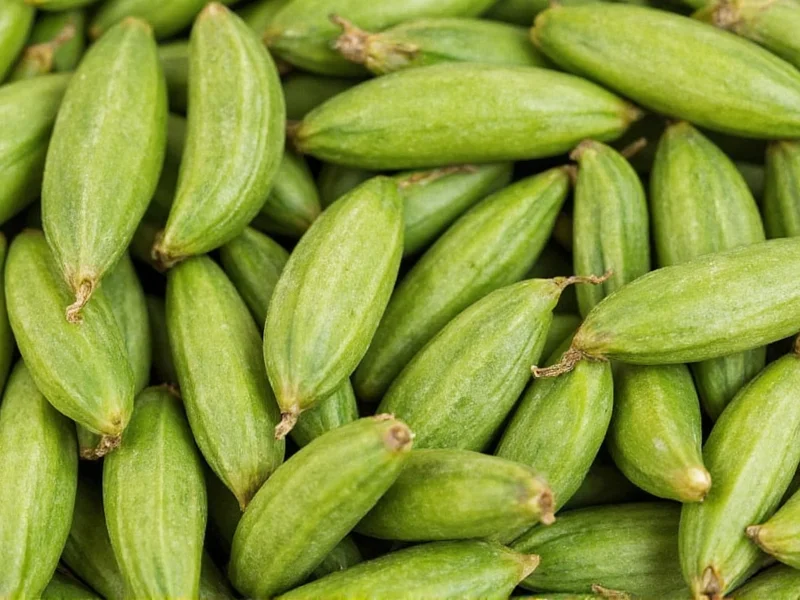Known as the “Queen of Spices,” cardamom (Elettaria cardamomum) has been prized for centuries across multiple cultures for its distinctive flavor and therapeutic properties. This aromatic spice comes in two main varieties: green cardamom, which is more common and has a delicate, citrusy flavor, and black cardamom, which offers a smokier, more robust taste profile.
Culinary Applications of Cardamom
Cardamom's complex flavor profile—combining citrus, floral, and herbal notes—makes it incredibly versatile in the kitchen. Chefs and home cooks worldwide rely on this spice to elevate both sweet and savory creations.
Cardamom in Baking and Desserts
When exploring what is cardamom used for in baking, you'll discover its transformative effect on pastries and sweets. Scandinavian baking traditions feature cardamom prominently in items like Finnish pulla bread, Swedish kardemummabullar, and Norwegian julekake. The spice pairs exceptionally well with:
- Coffee cakes and sweet rolls
- Cookies and shortbread
- Fruit-based desserts
- Ice creams and custards
- Traditional Indian sweets like kulfi and halwa
Cardamom in Beverages
One of the most widespread uses of cardamom globally is in beverages. In Middle Eastern cultures, cardamom is essential in Arabic coffee (qahwa), where whole pods are crushed and brewed with the coffee beans. Indian chai tea almost always includes cardamom among its spice blend. The spice also enhances:
- Spiced hot chocolate
- Smoothies and health drinks
- Cocktails and mocktails
- Infused water and herbal teas
Cardamom in Savory Dishes
Understanding cardamom in Indian cuisine reveals its crucial role in many curry blends, rice dishes, and meat preparations. In savory applications, cardamom works harmoniously with other spices to create complex flavor profiles without overwhelming the dish. Common savory uses include:
- Rice pilafs and biryanis
- Curry pastes and garam masala blends
- Meat marinades, particularly for lamb and chicken
- Vegetable stews and lentil dishes
- Middle Eastern rice dishes like maqluba
| Region | Signature Dishes | Cardamom Form Used |
|---|---|---|
| India | Biryani, chai, kheer | Whole pods or ground |
| Scandinavia | Pulla, kardemummabullar | Ground |
| Middle East | Arabic coffee, maqluba | Crushed pods |
| East Africa | Spiced stews, rice dishes | Ground or whole |
Medicinal and Health Applications
Traditional medicine systems have long recognized medicinal uses of cardamom for various health concerns. Modern research continues to investigate many of these traditional applications.
Digestive Health Benefits
One of the most well-documented traditional uses is for digestive support. Cardamom contains compounds that may help:
- Relieve gas and bloating
- Reduce nausea
- Stimulate appetite
- Alleviate stomach cramps
Many cultures chew cardamom seeds after meals as a natural digestive aid and breath freshener—a practice that combines two of cardamom's benefits and applications simultaneously.
Respiratory Support
In Ayurvedic medicine, cardamom has been used to support respiratory health. The spice contains cineole, a compound with potential anti-inflammatory properties that may help with:
- Easing breathing difficulties
- Reducing cough frequency
- Clearing nasal congestion
Antioxidant Properties
Research suggests cardamom contains significant antioxidants that may help combat oxidative stress in the body. These compounds contribute to cardamom for digestive health and potentially support overall wellness when consumed regularly as part of a balanced diet.
Traditional and Cultural Uses
Beyond cooking and medicine, cardamom has held cultural significance across civilizations:
- In ancient Egypt, it was used for oral hygiene and as a breath freshener
- In traditional Indian weddings, cardamom symbolizes purity and prosperity
- In Middle Eastern hospitality customs, cardamom-infused coffee represents welcome and respect
- In some cultures, it's used in religious ceremonies and rituals
Selecting and Storing Cardamom for Optimal Use
To maximize how to use cardamom in baking and other applications, proper selection and storage are crucial:
- Choose plump, green pods that feel heavy for their size
- Store whole pods in airtight containers away from light and heat
- Grind seeds just before use for maximum flavor impact
- Whole pods maintain freshness for up to one year, while ground cardamom loses potency within 3-6 months
Practical Tips for Using Cardamom
When incorporating cardamom into your cooking or wellness routine:
- Start with small amounts—it's potent and can easily dominate other flavors
- For best results in cardamom in Indian cuisine, toast whole pods briefly before grinding
- Remove pods before serving in dishes where they weren't meant to be eaten
- Combine with complementary spices like cinnamon, cloves, and nutmeg











 浙公网安备
33010002000092号
浙公网安备
33010002000092号 浙B2-20120091-4
浙B2-20120091-4